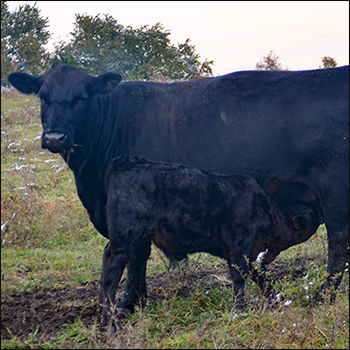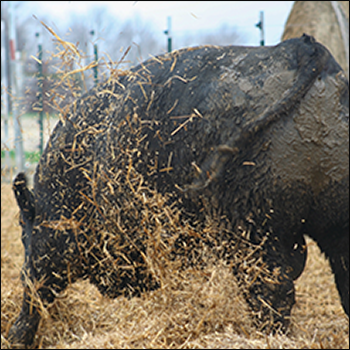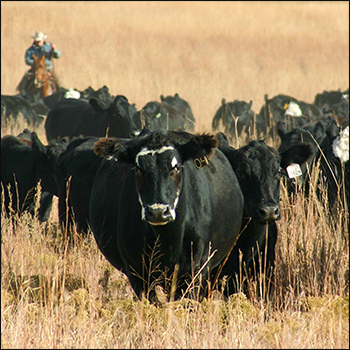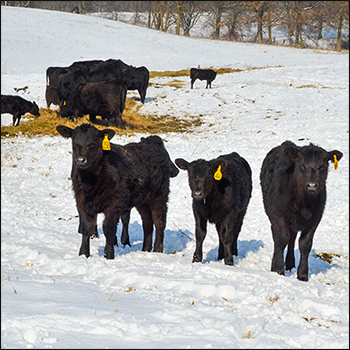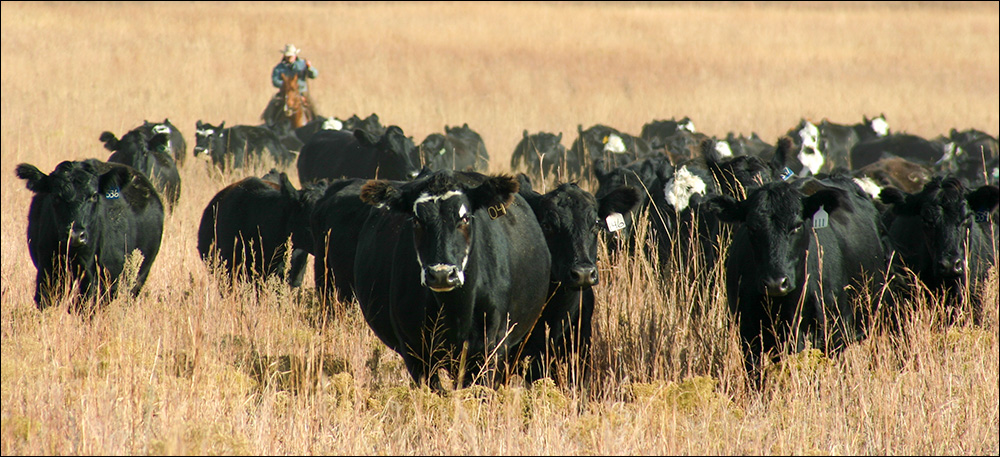
Feeding Cows During Feed Shortages
Manage drought from many angles to create the optimum plan.

Persistent drought during 2021 prompted forage shortages across much of cow country. Couple that with high feed-crop prices and many cattle producers find themselves in a precarious position. They must make decisions that will affect both short- and long-term production and profitability. The trick is to avoid decisions that inflict unintended consequences for both.
During the 2021 Range Beef Cow Symposium hosted Nov. 16-17 in Rapid City, S.D., Ryan Rhoades and Hector Menendez said the producers who survive such challenging times are those who are most adaptable. The speakers, animal scientists from Colorado State University and South Dakota State University, respectively, said the most adaptable producers are those willing to change the mental models that direct decision-making.
“Some producers seek a quick fix,” said Rhoades, explaining how producers may try to feed their way through a drought by buying high-priced hay and supplements. They may sell cows, too, sooner or later. Often, it’s later, when many others are also liquidating and sale prices have declined.
“But fixed costs may not change much, even after destocking by 10% or 20%, so per-cow costs are higher,” added Rhoades. “And buy-back costs usually are high when restocking.”
Rhoades and Menendez advised ranchers to take a systems approach when navigating their way through periods of drought and accompanying high feed costs. They recommended evaluation of not only the immediate effects, but consequences for the future. If maintaining the herd is a goal, producers should consider multiple strategies, including:
- developing a strategic supplementation program;
- analyzing the destocking strategy; and
- managing the cow herd differently.
Rhoades said strategic supplementation starts with knowing what nutrients may be lacking in grazed forage and choosing a cost-effective supplement option. He urged producers to compare supplements on the basis of cost-per-pound of nutrient. Rhoades also reminded the audience that interval feeding can reduce fuel expense and labor. Protein supplements need not be fed daily. A 30% or greater crude protein (CP) supplement can be fed once or twice per week, while product with 20% or less CP should be fed every other day.
Regarding a destocking strategy, Menendez said culling of the breeding herd starts with the easy picks — open cows, old cows, and cows with physical problems or bad attitudes. When culling deeper, production records can help identify the least-productive cull candidates.
“When choosing between cows or heifers, consider cow depreciation,” said Menendez. “And have trigger dates in mind for when you will activate your destocking decisions.”
Producers were advised to determine early how destocking will proceed. Monitoring of precipitation and forage availability will guide when predetermined steps will be implemented. Other considerations include animal condition and markets, so producers can destock before animals experience excessive weight loss and prices reach extreme lows.
Managing the cow herd differently may require the most out-of-the-box kind of thinking. For the producer accustomed to wintering cows on dormant pasture and protein supplement, it might mean utilizing crop residues as an alternative resource. It could mean limit-feeding cows a high-concentrate ration while confining cows in a drylot or sacrifice pasture. Limit-feeding requires some equipment and intensive management, but it is often more economical than feeding hay and protein supplement. It may reduce or eliminate the need for destocking and allow rest for pasture.
Rhoades and Menendez urged producers to manage for long-term drought resistance by always using appropriate stocking rates and resist the pressure to overgraze during feed shortages. Rhoades called appropriate stocking rates a “long-term solution” that can help producers mitigate excessive destocking and feed purchases. To ranchers who have destocked, he recommended consideration of yearlings as a buy-back alternative. Manage fewer cows, but also manage yearlings. A yearling enterprise offers ranch managers the flexibility to adjust stocking rates according to forage availability and avoid culling from the core of a cow herd.
Editor’s note: Troy Smith is a cattleman and freelance writer from Sargent, Neb. Photo by Matt Caldwell.

Angus Proud
In this Angus Proud series, Editorial Intern Jessica Wesson provides insights into how producers across the country use Angus genetics in their respective environments.
 Angus Proud: Scott Sproul
Angus Proud: Scott Sproul
Oklahoma operation learned wisdom of moving calving season to better suit their marketing needs.
 Angus Proud: Bubba Crosby
Angus Proud: Bubba Crosby
Fall-calving Georgia herd uses quality and co-ops to market calves.
 Angus Proud: Jim Moore
Angus Proud: Jim Moore
Arkansas operation retains ownership through feeding and values carcass data.
 Angus Proud: Les Shaw
Angus Proud: Les Shaw
South Dakota operation manages winter with preparation and bull selection.
 Angus Proud: Jeremy Stevens
Angus Proud: Jeremy Stevens
Nebraska operation is self-sufficient for feedstuffs despite sandy soil.
